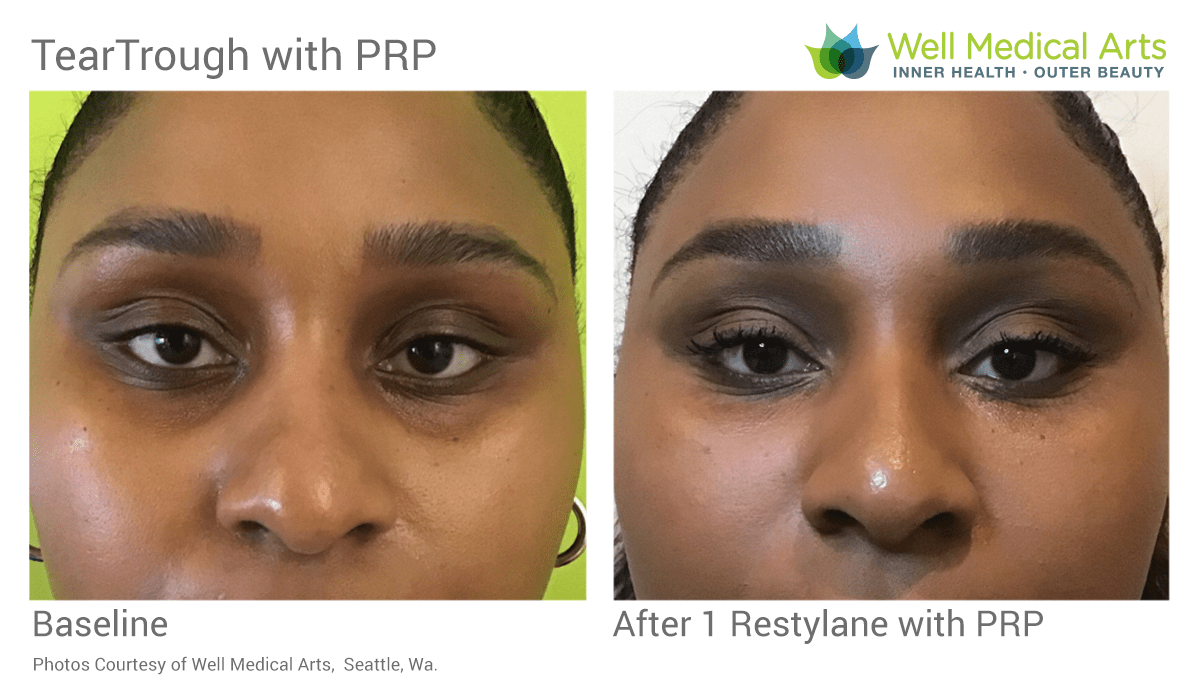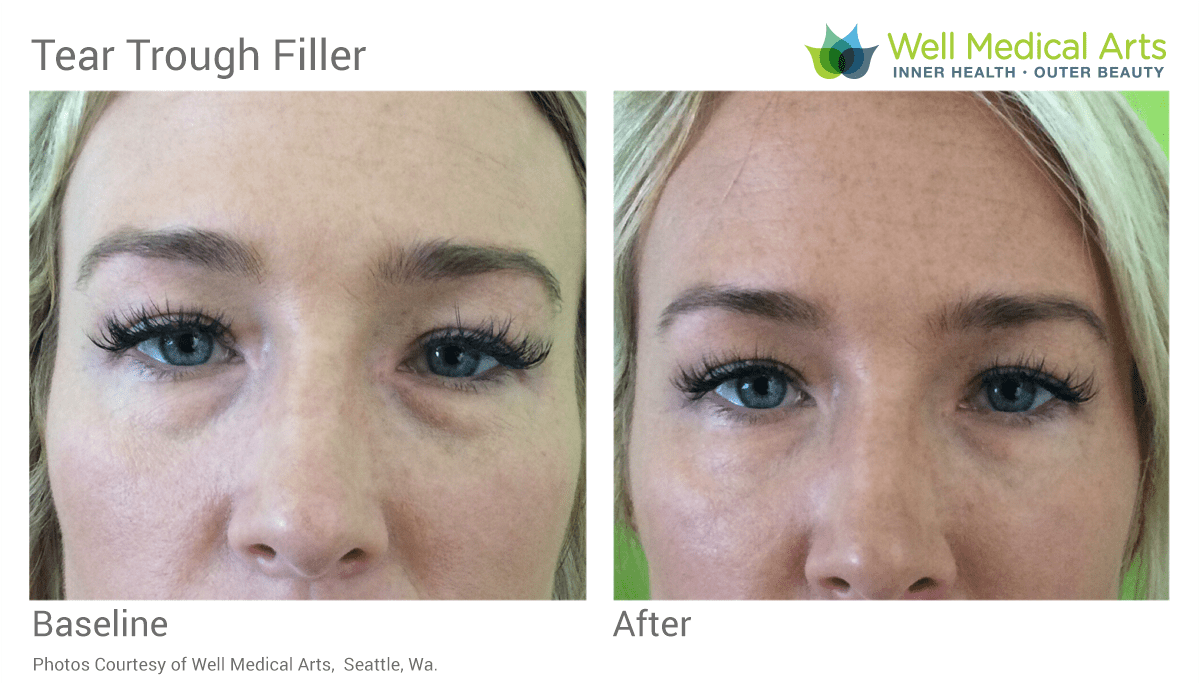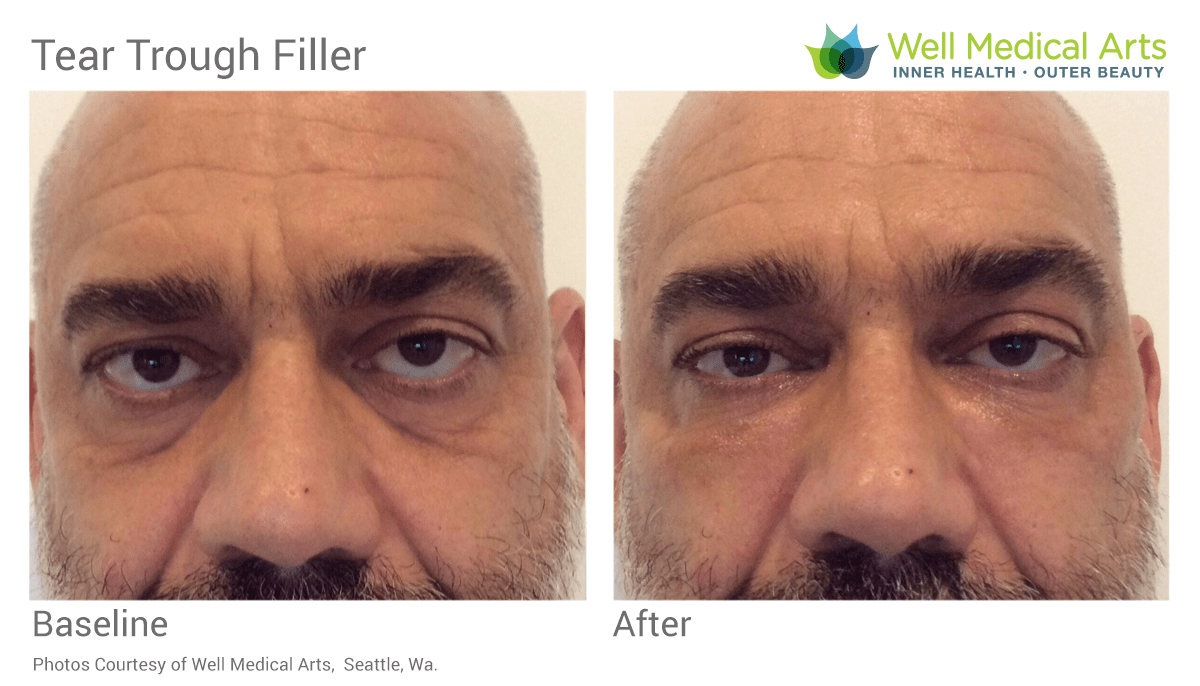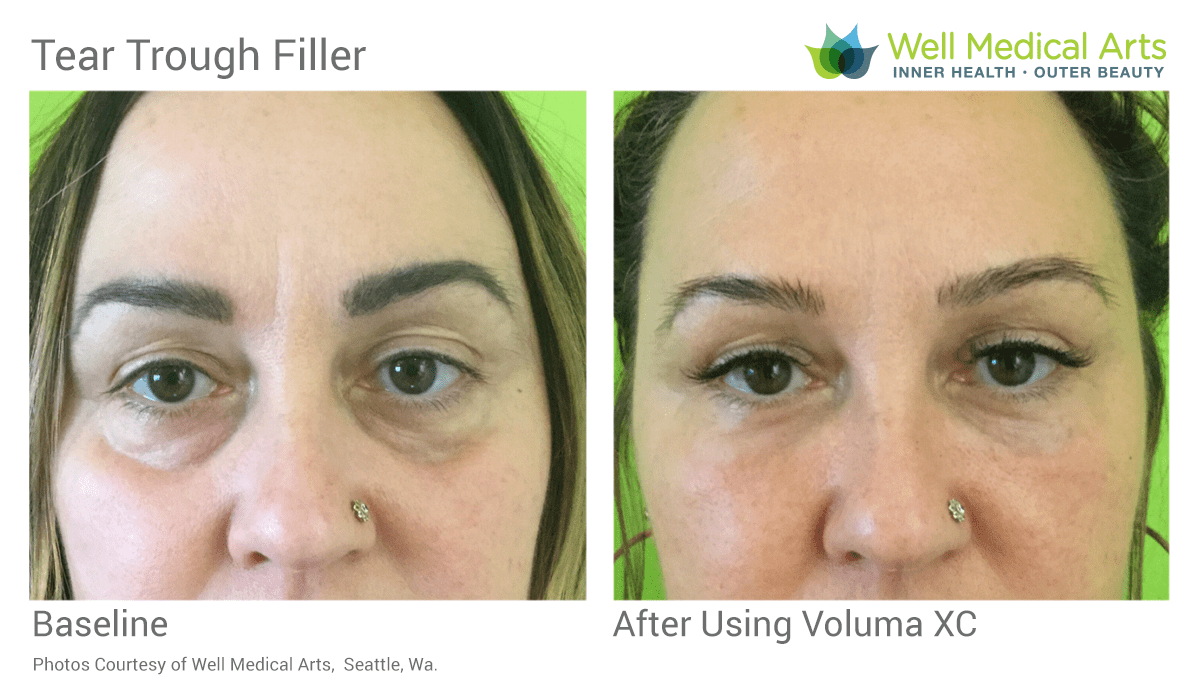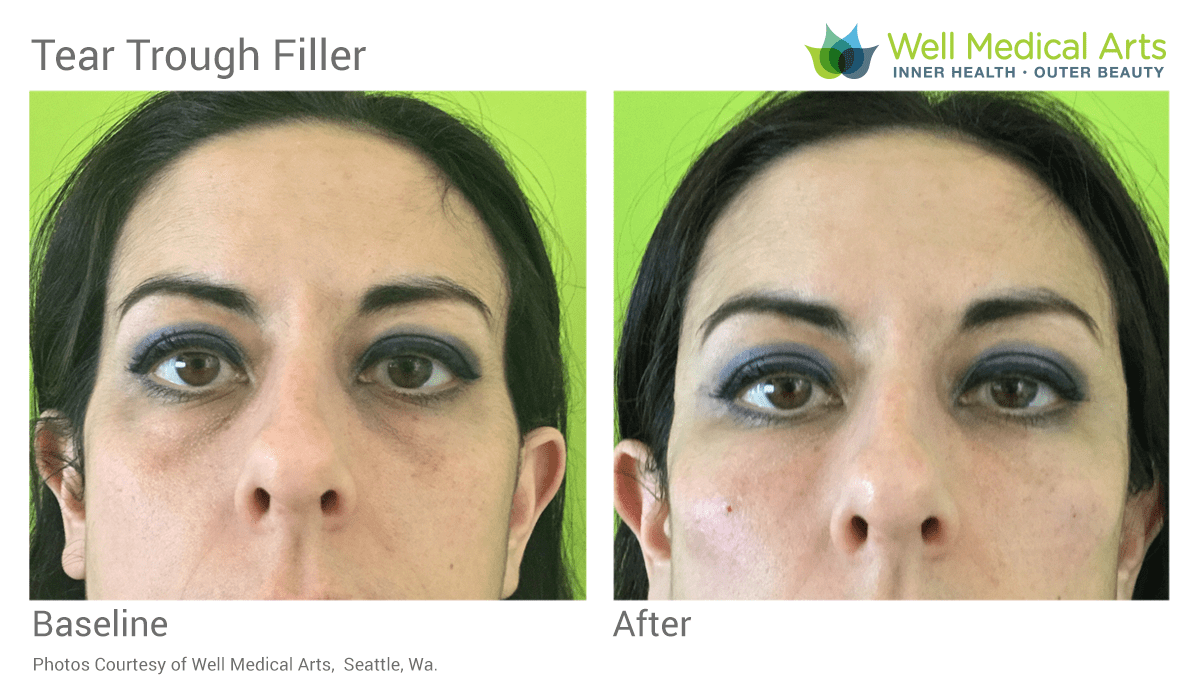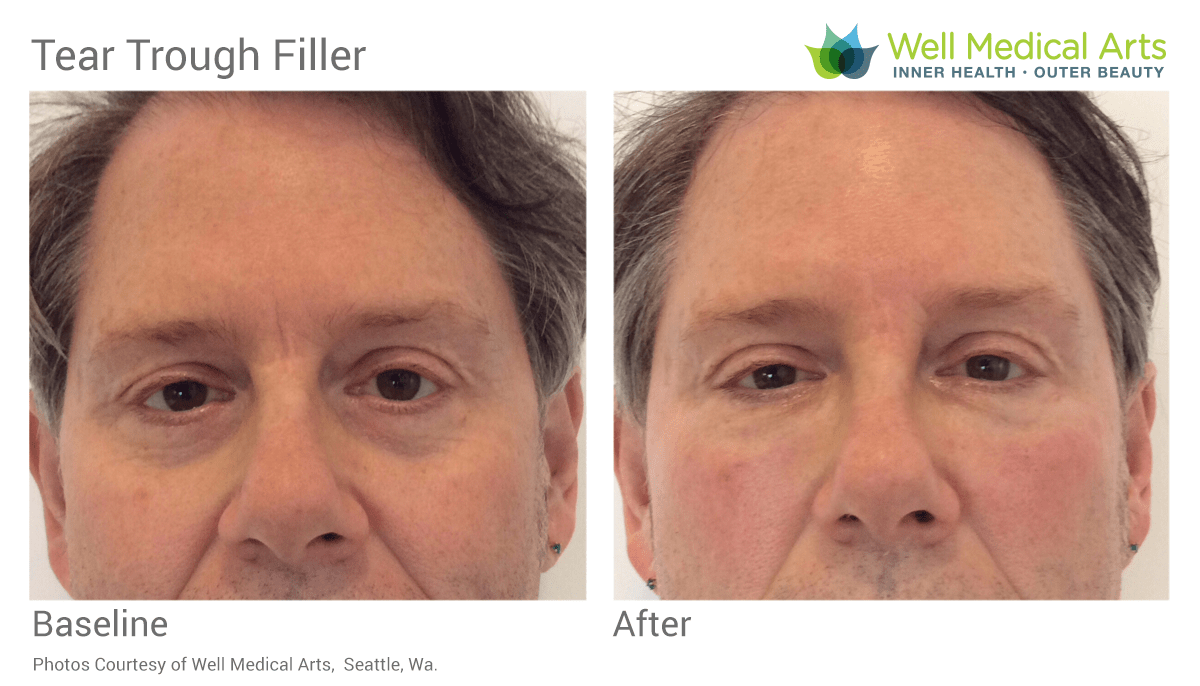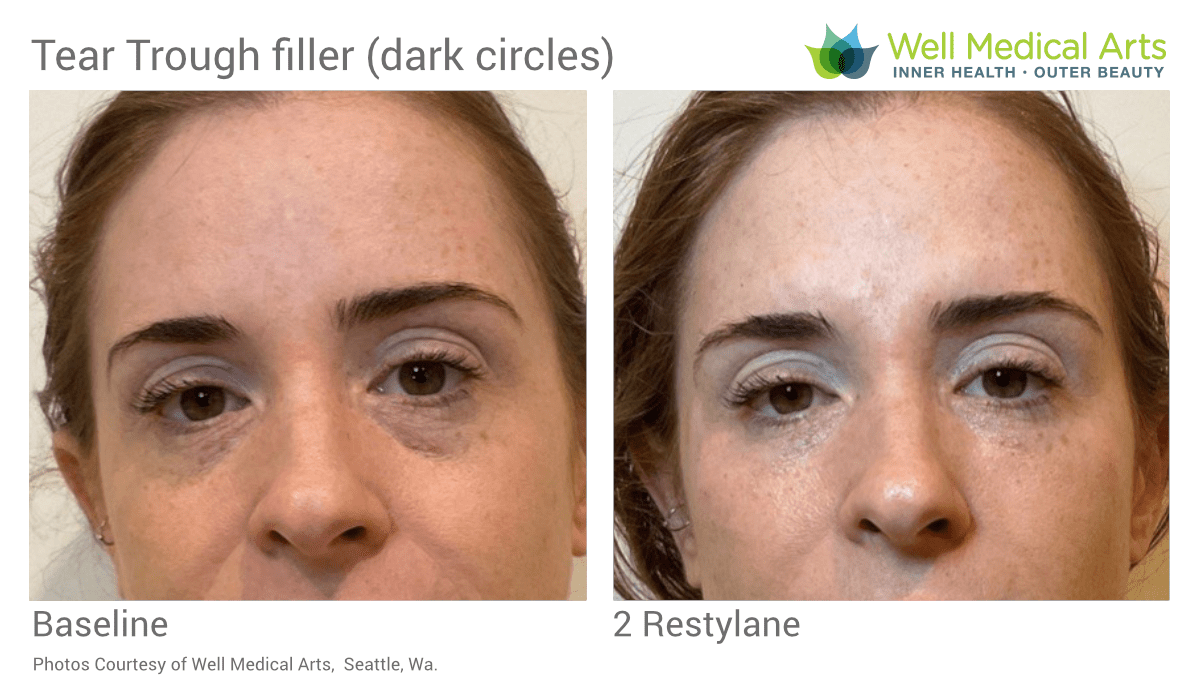Tired of looking tired? Replacing lost volume in the Tear Troughs can reduce the appearance of black bags under the eyes, making you look younger and more rested.
For many patients, both young and old, filler treatments to the under eye area are a safe and effective alternative to surgery to minimize the tired look that dark circles under the eyes can cause. Many patients are unhappy with the shadows and depressions that occur under the eye, this can be due to genetics, but is also a common sign of aging. At Well Medical Art we have performed thousands of tear trough treatments over the last 15 years.
* Individual Results and Patient Experience May Vary
Schedule your appointments with potential downtime in mind.
No one likes to bruise or swell, but with any injectable procedure you must take these risks in mind when scheduling. At Well Medical Arts we take many precautions to minimize these side effects but will never be able to eliminate the possibilities. DO NOT SCHEDULE A FILLER APPOINTMENT LESS THAN 2 WEEKS PRIOR TO ANY MAJOR EVENT. Keep in mind that everyone resolves bruises and swelling differently. As a rule of thumb expect a bruise to last 5-10 days and swelling a little longer.
If you have experienced swelling it is advised that you give your body at least 2 weeks to heal before scheduling a follow up appointment. This gives the swelling time to resolve so that the dermal filler work may be accurately evaluated.
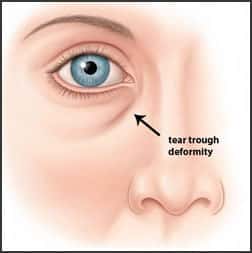
The tear trough and dark circles under the eyes.
The tear trough, also known as a nasojugal groove, extends from the inner corner of the eye, following a semicircular arc and transitioning to the palpebromalar groove. A deep tear trough can create a shadow that is perceived as a dark circle below the eye. It also creates a division between the lower eyelid and cheek that is an early sign of aging around the eyes. Patients with deep tear troughs often complain that they look more tired and older than they really are.
A tear trough is caused by tethering of the lower eyelid skin to the underlying facial bones. As aging leads to volume loss and tissue laxity in the lower eyelid, the tear trough becomes more prominent. The appearance of lower eyelid bags can accentuate a tear trough, making the shadow more visible. And while it is more common as patients age, even younger patients can have a tear trough deformity.
While a tear trough deformity can be corrected surgically by repositioning fat in the lower eyelid, treatment with dermal fillers have become a popular alternative. Many patients prefer a non-invasive approach, in order to avoid the risks and potential complications of surgery. Tear trough treatments with a dermal filler such can provide a patient with a natural result, with minimal downtime. The length in which a treatment will last will depend upon the dermal filler used.
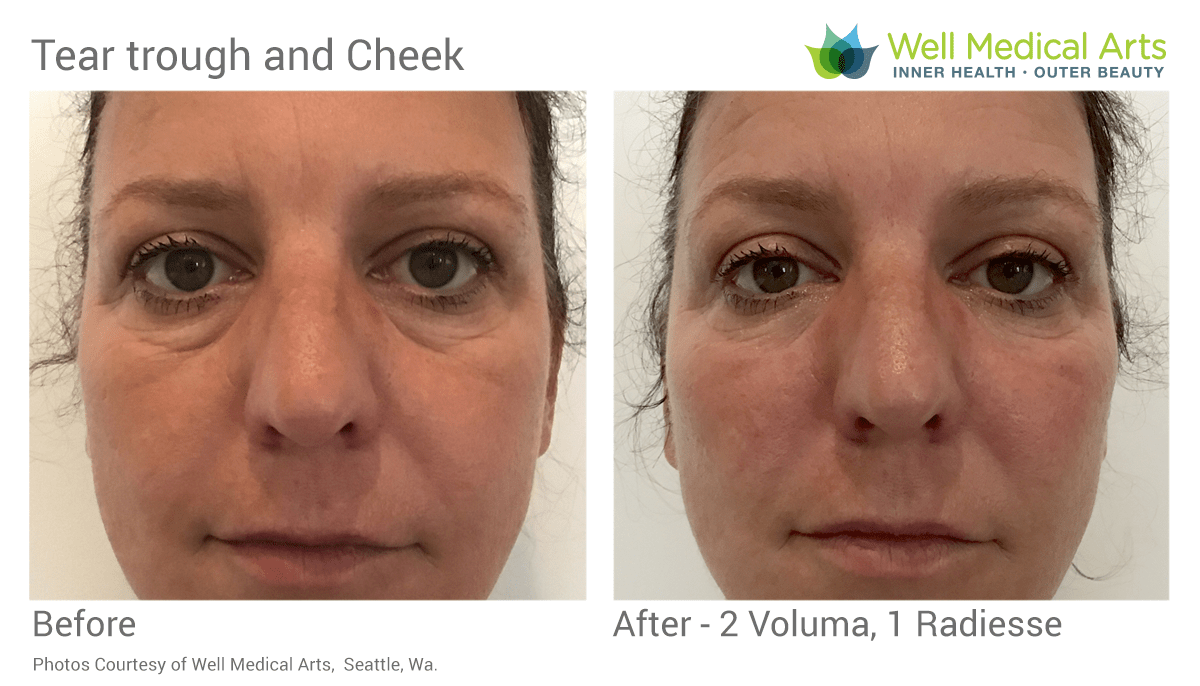
Online scheduling is not available for this appointment. Please call our patient care coordinators at 206-935-5689 to schedule your appointment or to learn more about this procedure.
The importance of experience in tear trough filler injections.
Dominique is one of the most experienced injectors in the Seattle Area and tear trough filler treatments make up a large part of her fillers practice. Filler treatments of the tear trough require a significant amount of skill and judgment. With poor judgment and unskilled technique, the complication rate is high and patient satisfaction is low. This is why many clinics will not perform tear trough treatments. It is essential for patients to undergo treatment not only with an experienced injector, but also a practitioner skilled in tear trough treatments. Over the years Dominique has perfected her technique using a micro cannula and growth factors which enable her to treat multiple areas with only a single injection site. Using the micro cannula makes it easier on the patient and reduces the risks of bruising, using the growth factors gives a smooth natural result and speeds up the healing process.
Who is a candidate for Tear Trough Filler treatment?
Patients who are good candidates often complain of a ‘hollow look’ or dark circles under they eyes; they may also point out enlarging fat pockets in the lower eyelids. Selecting appropriate patients for tear trough treatment requires expert judgment. Excellent candidates have good skin elasticity and adequate skin thickness. The position of the orbital rim to the tear trough is also an extremely important consideration. For these reasons, not everyone is a good candidate for treatment of the tear trough. However, Dominique Well has found innovative ways to sometimes treat patients who are not ideal candidates. This sometimes involves staged treatments as well.
Important points to know prior to your tear trough procedure.
- Surprisingly, injections under the eyes are not painful. Patients are often anxious about their upcoming treatment, but are pleasantly surprised to find that there is very little discomfort.
- Bruising is not uncommon after filler treatment of the tear trough, but typically resolves within a week. Swelling can be even more common and often takes a few weeks to resolve. Please read our post injectable instructions page if you have experienced bruising or swelling. Patients are advised not to undergo treatment if they have an important event around the corner.
- Most patients are pleased with the outcome of treatment, even if their results are subtle.
- Most patients only require 1-2 syringes of the chosen filler, but patients with very deep tear troughs may ultimately need multiple syringes.
- As with all filler treatments, it is essential that patients avoid aspirin, ibuprofen, or any other medication/supplement that may promote bleeding. You can read our full list of Before and after care for dermal fillers at https://wellmedicalarts.com/post-injectable-instructions/

